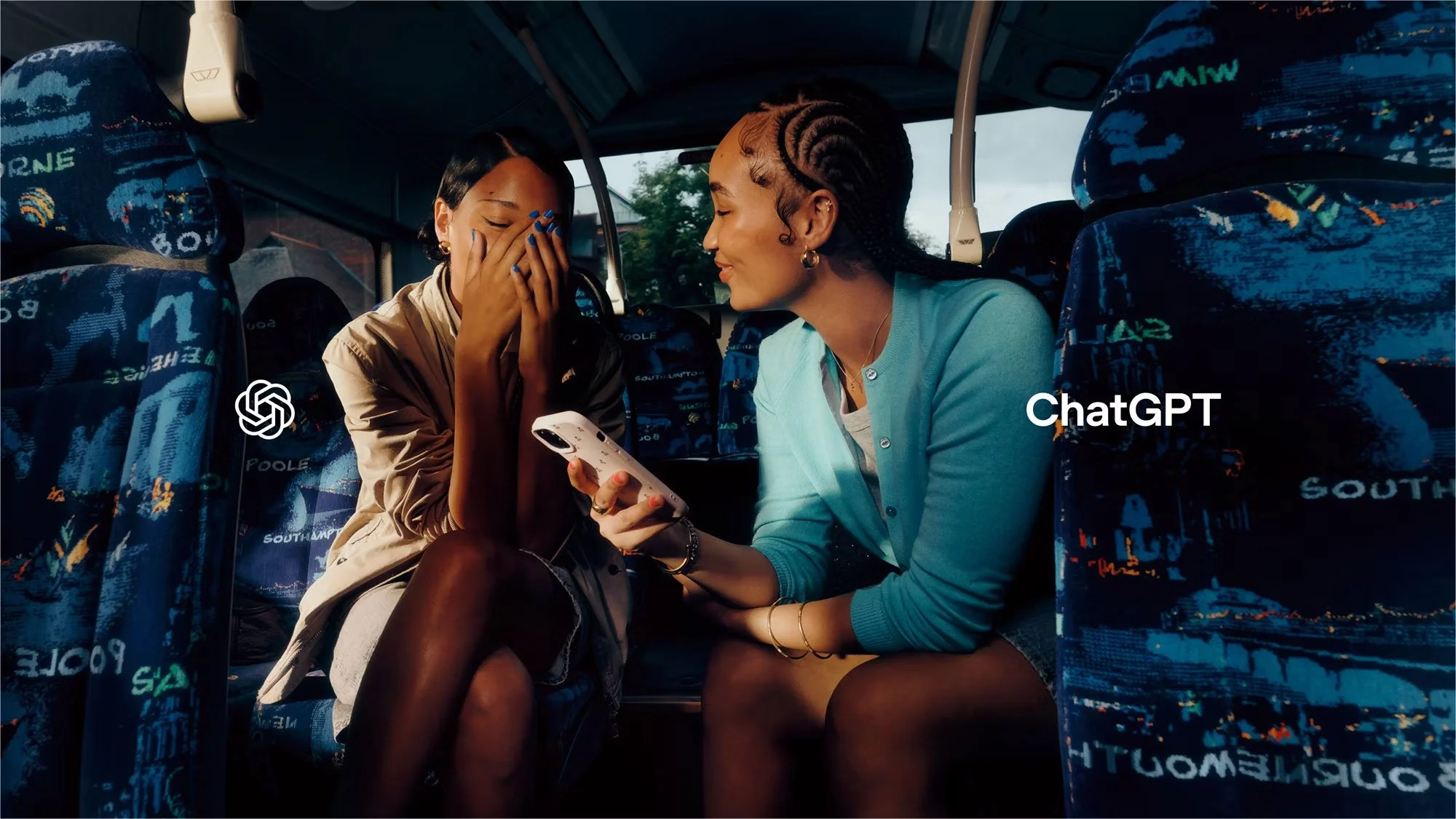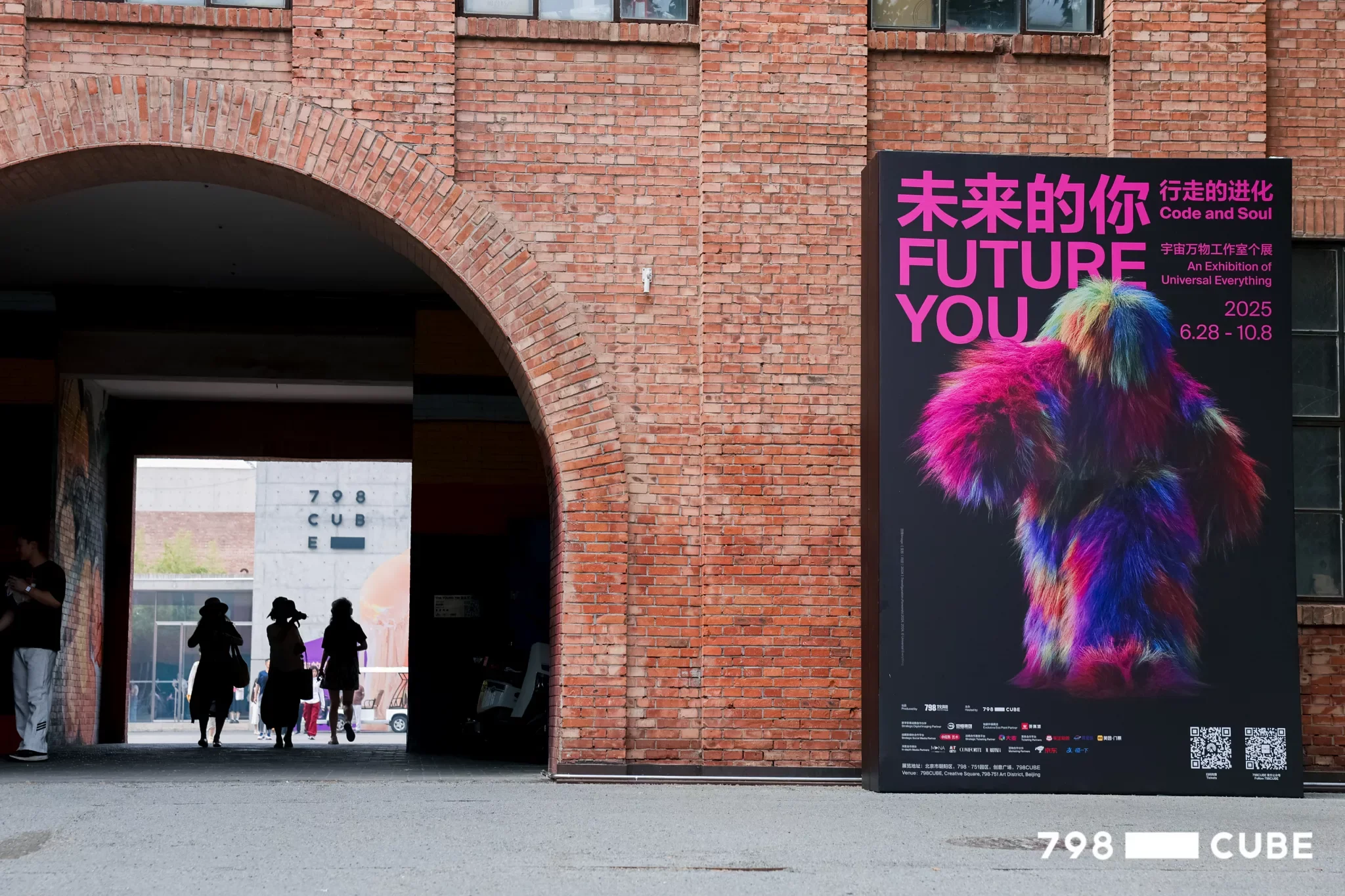INVISIBLE AI IS THE NEW FLEX: WHY OPENAI’S ‘HUMAN’ ADS WORKED
Invisible AI is the new flex. OpenAI kept the craft human and won. Friend went hype-first and got torched.
Friend AI subway poster, NYC, vandalized with handwritten critiques.
TL;DR
Studios are using AI behind the scenes but keeping it quiet in public. That silence creates a false read for designers who avoid AI. OpenAI’s new ChatGPT brand campaign is a case study in restraint: human-shot film, human performances, human taste in the final frames—with AI assisting where it actually elevates the work. Meanwhile, Friend plastered AI-forward messaging across NYC and got roasted. The takeaway is simple: Invisible AI, visible craft. Use AI where it helps outcomes, keep it human where it needs to connect.
The cultural moment: AI optics vs AI outcomes
Let’s name the tension. Designers think “if an AI company did not use AI visuals, then AI must be useless for creative.” That is a miss. OpenAI’s latest brand push shows everyday moments shot on 35mm by a real film crew with real talent, while openly saying ChatGPT assisted in development as a co-creator. Human craft led the look and feel. AI quietly supported the process. That is not hypocrisy. That is taste.
Across press coverage you see the same thread: the spots were filmed on 35mm, directed by Miles Jay via Smuggler, with photographer Samuel Bradley and stylist Heidi Bivens on the OOH. AI helped behind the scenes. The final aesthetic is intentionally human.
Now contrast that with “Friend,” the AI companion necklace. They went maximalist with an AI-is-your-buddy message and flooded New York subways. The public response was swift. Ads were defaced with hand-scrawled callouts about surveillance. Media documented the backlash. Even as the founder insisted provocation was the point, the outcome was brand damage and a citywide eye roll.
Why OpenAI’s ads landed
Human story, human faces
Emotional resonance still favors live action with real performances. OpenAI built trust by presenting ChatGPT as useful background capability, not the spectacle. Shot on 35mm and cut like a small indie film, not a tech demo.
AI used where it elevates
They explicitly treated ChatGPT as a co-creator in planning and ideation, not a generator of final frames. That division of labor avoids uncanny visuals and provenance risk while speeding development.
Brand safety beats cheap provocation
The public has limited patience for AI bragging. Costume your ad in “AI aesthetic” and people look for seams to rip. Keep the tech invisible and the story believable. Adweek literally slotted the campaign into “Ads of the Week” for its grounded approach.
Why “Friend” got torched
Provocation without affection
If your line reads like “AI is a better friend than humans,” New Yorkers will respond with a Sharpie. The campaign became a public canvas for rejection.
Visible AI where it does not help
The more you sell the aesthetic of AI as the big idea, the more you invite the backlash that already exists in culture. Multiple outlets captured vandalism and skepticism about surveillance and intimacy being automated.
Attention is not the same as affinity
The founder argued the vandalism was part of the art. Maybe. But if you need the public to trust your product, contempt is not a funnel.
The framework: Invisible AI, visible craft
Here’s the practical framework we teach and use.
Use AI for:
Research synthesis and competitor scans
Concept boards, beatboards, line variations, alt story arcs
Scheduling, compliance, legal checks, asset wrangling
Iterative script polish and tonal refines
Previsualization for blocking or editing paths
Keep it human for:
Casting, performance, micro-expressions, intimacy
Cinematography choices, lens character, camera movement
Final production design, costume texture, location choices
Color grade nuance, sound design dynamics that need lived taste
Any asset that triggers provenance or likeness sensitivity
This is the blend OpenAI demonstrated. Human-shot visuals with AI supporting the process. The result feels honest and high craft.
For designers: the dangerous silence
Studios are integrating AI quietly because client optics are fragile. Totally understandable. But if you are a designer who refuses to learn AI on principle, you are missing where the real leverage now lives. Your peers are already using AI to elevate research, structure, and iteration. They simply are not making a press release out of it. The flex is not shouting “we used AI.” The flex is delivering better work, faster, with fewer wrong turns. Invisible AI. Visible craft.
Case study snapshots you can reference in client convos
OpenAI campaign
Largest-ever push for ChatGPT, human-shot on 35mm, developed by OpenAI’s in-house team with partners, and yes, ChatGPT helped as a co-creator in development. Not a single synthetic face in the final cut. That is how you elevate with AI without making it the show.
Friend subway blitz
Massive spend across NYC transit. Very visible. Very controversial. Documented backlash and vandalism reframed the narrative from “clever provocation” to “public rejection.” Attention without trust is not the outcome you want.
Universal Everything and the art of restraint
Look at studios like Universal Everything that blend computation with sensitivity. The tech is there, but the experience reads as culture, not a plug-in. That is the north star. Invisible scaffolding. Visible soul.
What to do next
Adopt the framework on your next brief
Decide up front where AI will elevate outcomes, and where you will keep it human. Write that split into the treatment.
Document provenance without turning it into a circus
If a stakeholder asks, you can articulate your process. No need to posture. Just show how AI saved time and improved depth.
Train your taste, not just your prompts
The tool is not your style. Your eye is. Use AI to explore 50 options, then pick the one that respects the brief.
If the audience can see the AI, ask why
Sometimes that is the point. Most of the time it is a distraction.
READY TO LEVEL UP YOUR WORKFLOW?
If you want the full system for using AI where it elevates and keeping it human where it matters, join the AI Branding Masterclass. We teach the craft split, not prompt roulette.
FAQ
Is it hypocritical when an AI brand does not use AI visuals?
No. The strategic use of AI is often behind the scenes where it elevates outcomes, while the final expression is guided by human taste. That is the OpenAI approach.
Will AI replace designers?
AI replaces repetitive tasks and accelerates exploration. Designers who elevate taste and decision-making become more valuable, not less.
What is “invisible AI”?
AI used in research, structure, iteration, and compliance that you cannot see on screen. The audience feels the benefit without being distracted by the tool.
Why did the “Friend” subway campaign backfire?
The message and optics positioned AI as a better friend than humans. New Yorkers answered in Sharpie. The difference between attention and affinity showed up fast.



